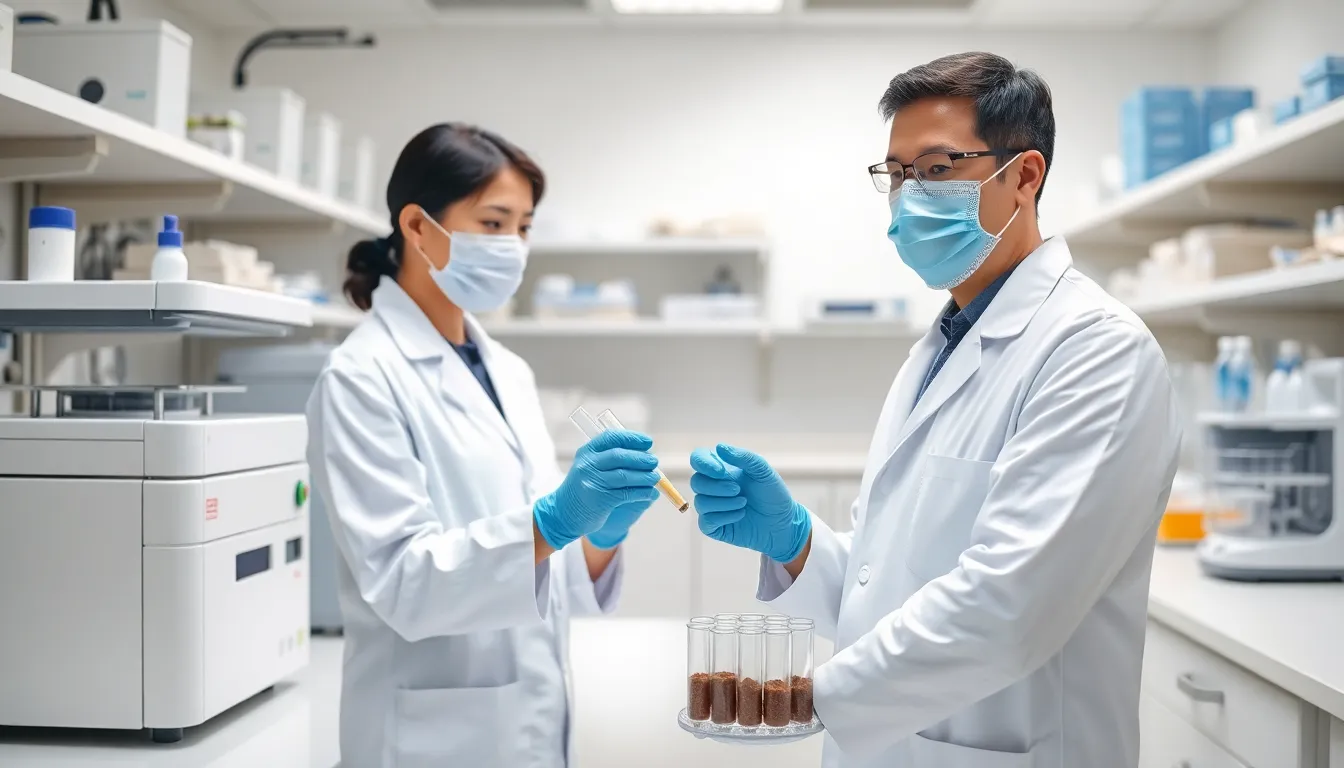Norovirus, often dubbed the “stomach bug,” can turn a pleasant gathering into a race for the nearest bathroom. With its rapid spread and unpleasant symptoms, knowing whether you’ve been struck by this pesky virus is crucial. But how does one go about testing for norovirus without turning into a germaphobe or a mad scientist?
Table of Contents
ToggleUnderstanding Norovirus
Norovirus, often called the “stomach bug,” spreads rapidly and leads to unpleasant gastrointestinal symptoms. Knowing more about this virus aids in understanding its transmission and effects.
What Is Norovirus?
Norovirus is a highly contagious virus that causes gastroenteritis, an inflammation of the stomach and intestines. It exists in several strains, each capable of causing illness. Outbreaks frequently occur in crowded places, such as cruise ships, schools, and nursing homes. Contaminated food or water commonly transmits it. Infected individuals can shed the virus in their feces and vomit, leading to further infections.
Symptoms of Norovirus Infection
Symptoms typically appear 12 to 48 hours after exposure. Commonly reported signs include nausea, vomiting, diarrhea, and stomach cramps. Additionally, some individuals experience fever, headache, and body aches. Symptoms can last one to three days, during which hydration is crucial. While most recover without medical intervention, severe dehydration may require medical attention.
Testing Methods for Norovirus

Testing for norovirus involves several methods that can confirm its presence and help manage outbreaks effectively. Each method offers distinct advantages, providing clarity in diagnosis.
Stool Testing
Stool testing remains a primary method for norovirus detection. Collecting a stool sample for laboratory analysis allows for accurate identification of the virus. This approach works best when performed within a few days of symptom onset. Results typically take 1 to 2 days, enabling timely intervention for affected individuals. Healthcare professionals recommend this method when gastrointestinal symptoms suggest an outbreak.
PCR Testing
PCR testing offers a sensitive approach to detect norovirus. By amplifying viral genetic material from stool samples, this method achieves high accuracy. It often provides results within hours, making it suitable for fast-paced clinical settings. This technique is particularly crucial during norovirus outbreaks, as it helps identify infections with precision. Diagnostic laboratories frequently utilize PCR testing due to its reliability and rapid turnaround.
Rapid Antigen Tests
Rapid antigen tests provide a quicker alternative for norovirus testing. These tests can yield results in under 30 minutes, making them beneficial for immediate decision-making. However, sensitivity may not match that of PCR methods, leading to potential false negatives. Despite this limitation, the convenience of rapid testing can aid in managing outbreaks in community settings. Many healthcare facilities incorporate rapid tests to streamline the diagnostic process.
When to Seek Testing
Recognizing when to seek testing for norovirus is essential for effective management. Early identification leads to better outcomes, especially in high-risk situations.
Symptoms to Watch For
Watch closely for symptoms that signal a potential norovirus infection. Common signs include nausea, vomiting, diarrhea, and stomach cramps. Some individuals also report fever, headache, and body aches. Symptoms often appear 12 to 48 hours after exposure. If experiencing severe dehydration, such as reduced urination, dry mouth, or dizziness, immediate testing becomes crucial. Quick testing ensures timely diagnosis and mitigates further spread.
High-Risk Groups
Certain groups face higher risks of severe complications from norovirus. Infants, elderly individuals, and people with weakened immune systems show increased vulnerability. Outbreaks often occur in crowded places, such as nursing homes, schools, and cruise ships. It’s important for caregivers and healthcare providers to remain vigilant in monitoring these populations. Prompt testing in high-risk groups contributes to effective outbreak containment and health management.
Interpretation of Test Results
Understanding test results for norovirus provides critical information for managing health and preventing outbreaks.
Positive Results
A positive test result confirms the presence of norovirus. This outcome typically correlates with reported symptoms such as nausea, vomiting, and diarrhea. Individuals should begin isolation to prevent further transmission. Healthcare providers may recommend hydration and monitoring for severe complications in vulnerable groups. For high-risk populations, timely medical intervention is essential to avoid dehydration and other severe symptoms. Following a positive result, it’s crucial to implement strict hygiene measures, including sanitizing communal areas and proper food handling practices, to curb spread.
Negative Results
A negative test result indicates no presence of norovirus in the sample tested. This outcome does not rule out gastrointestinal infections caused by other pathogens, such as bacteria or other viruses. Symptoms may persist even in the absence of norovirus, necessitating further evaluation if they continue. Healthcare providers might suggest symptom management and testing for alternate causes instead. Maintaining awareness of overall health and hygiene practices remains important, particularly in settings where outbreaks are prevalent. Following negative results helps individuals focus on recovery while remaining vigilant about their health.
Testing for norovirus is essential for effective management and prevention of outbreaks. By understanding the various testing methods available individuals can make informed decisions about their health. Recognizing symptoms and knowing when to seek testing is crucial especially for high-risk groups. A positive test result necessitates immediate action to prevent further spread while a negative result encourages continued monitoring for other gastrointestinal issues. Staying vigilant and practicing good hygiene will help reduce the risk of contracting norovirus and ensure a healthier environment for everyone.




